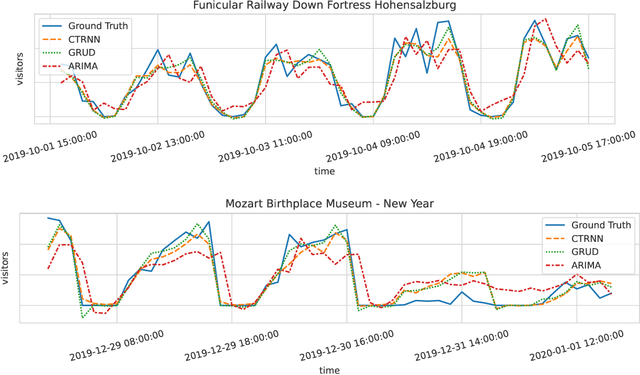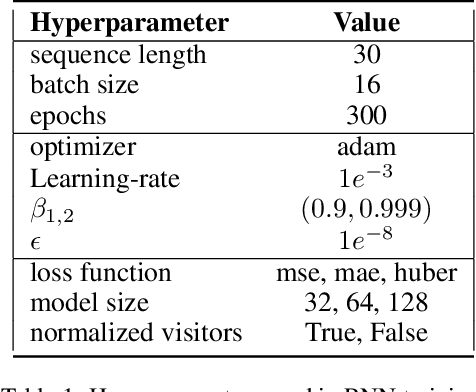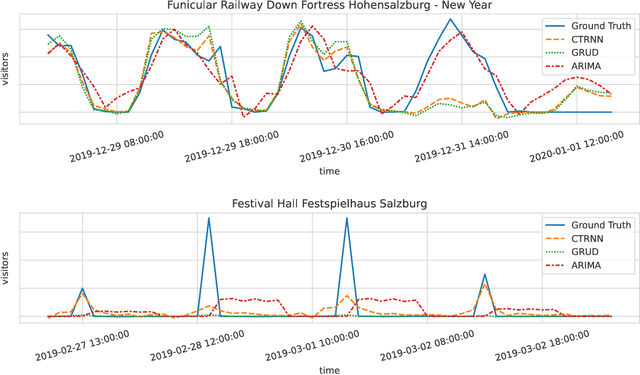Ivan Majic
Whose Truth? Pluralistic Geo-Alignment for (Agentic) AI
Aug 07, 2025Abstract:AI (super) alignment describes the challenge of ensuring (future) AI systems behave in accordance with societal norms and goals. While a quickly evolving literature is addressing biases and inequalities, the geographic variability of alignment remains underexplored. Simply put, what is considered appropriate, truthful, or legal can differ widely across regions due to cultural norms, political realities, and legislation. Alignment measures applied to AI/ML workflows can sometimes produce outcomes that diverge from statistical realities, such as text-to-image models depicting balanced gender ratios in company leadership despite existing imbalances. Crucially, some model outputs are globally acceptable, while others, e.g., questions about Kashmir, depend on knowing the user's location and their context. This geographic sensitivity is not new. For instance, Google Maps renders Kashmir's borders differently based on user location. What is new is the unprecedented scale and automation with which AI now mediates knowledge, expresses opinions, and represents geographic reality to millions of users worldwide, often with little transparency about how context is managed. As we approach Agentic AI, the need for spatio-temporally aware alignment, rather than one-size-fits-all approaches, is increasingly urgent. This paper reviews key geographic research problems, suggests topics for future work, and outlines methods for assessing alignment sensitivity.
Probing the Information Theoretical Roots of Spatial Dependence Measures
May 28, 2024



Abstract:Intuitively, there is a relation between measures of spatial dependence and information theoretical measures of entropy. For instance, we can provide an intuition of why spatial data is special by stating that, on average, spatial data samples contain less than expected information. Similarly, spatial data, e.g., remotely sensed imagery, that is easy to compress is also likely to show significant spatial autocorrelation. Formulating our (highly specific) core concepts of spatial information theory in the widely used language of information theory opens new perspectives on their differences and similarities and also fosters cross-disciplinary collaboration, e.g., with the broader AI/ML communities. Interestingly, however, this intuitive relation is challenging to formalize and generalize, leading prior work to rely mostly on experimental results, e.g., for describing landscape patterns. In this work, we will explore the information theoretical roots of spatial autocorrelation, more specifically Moran's I, through the lens of self-information (also known as surprisal) and provide both formal proofs and experiments.
Prediction of Tourism Flow with Sparse Geolocation Data
Aug 28, 2023Abstract:Modern tourism in the 21st century is facing numerous challenges. Among these the rapidly growing number of tourists visiting space-limited regions like historical cities, museums and bottlenecks such as bridges is one of the biggest. In this context, a proper and accurate prediction of tourism volume and tourism flow within a certain area is important and critical for visitor management tasks such as sustainable treatment of the environment and prevention of overcrowding. Static flow control methods like conventional low-level controllers or limiting access to overcrowded venues could not solve the problem yet. In this paper, we empirically evaluate the performance of state-of-the-art deep-learning methods such as RNNs, GNNs, and Transformers as well as the classic statistical ARIMA method. Granular limited data supplied by a tourism region is extended by exogenous data such as geolocation trajectories of individual tourists, weather and holidays. In the field of visitor flow prediction with sparse data, we are thereby capable of increasing the accuracy of our predictions, incorporating modern input feature handling as well as mapping geolocation data on top of discrete POI data.
Deep-Learning vs Regression: Prediction of Tourism Flow with Limited Data
Jun 27, 2022



Abstract:Modern tourism in the 21st century is facing numerous challenges. One of these challenges is the rapidly growing number of tourists in space limited regions such as historical city centers, museums or geographical bottlenecks like narrow valleys. In this context, a proper and accurate prediction of tourism volume and tourism flow within a certain area is important and critical for visitor management tasks such as visitor flow control and prevention of overcrowding. Static flow control methods like limiting access to hotspots or using conventional low level controllers could not solve the problem yet. In this paper, we empirically evaluate the performance of several state-of-the-art deep-learning methods in the field of visitor flow prediction with limited data by using available granular data supplied by a tourism region and comparing the results to ARIMA, a classical statistical method. Our results show that deep-learning models yield better predictions compared to the ARIMA method, while both featuring faster inference times and being able to incorporate additional input features.
 Add to Chrome
Add to Chrome Add to Firefox
Add to Firefox Add to Edge
Add to Edge